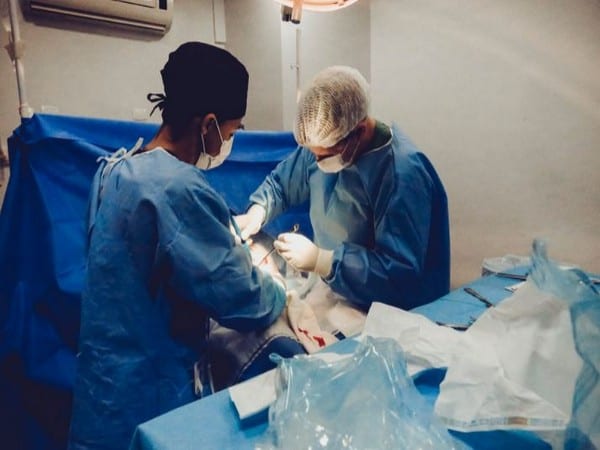A-Fib Patients Can Prevent Stroke If Surgery Is Done
Nikki Attkisson | Last Updated : May 19, 2021A recent study shows that a basic surgery will reduce the risk of stroke by more than a third of patients with atrial fibrillation, a common irregular heartbeat.
A-Fib Patients Can Prevent Stroke If Surgery Is Done
The researchers showed that limiting the left atrial appendage, which is an unused finger-like tissue that collects blood in the upper chamber of the heart and raises the risk of clots that trigger strokes, reduces the stroke risk.

According to the lead researcher Dr. Richard Whitlock, who is a professor of surgery at McMaster University, Canada, this analysis was conducted on patients who were already receiving cardiac surgery for other reasons, so it was simply the addition of secondary treatment.
Subjects in this study were also taking blood thinners to avoid stroke, as are the majority of atrial fibrillation patients.
This research backs up the technique of removing and closing the left atrial appendage during cardiac surgery. However, Whitlock states that patients would also need to continue to take blood thinners following the procedure.
The extra stroke prevention is obtained by a combination of the surgery and continue to take blood thinners, he said.
Whitlock claims that extracting the left atrial appendage has no effect on how the heart works and that the surgery is healthy with no side effects.
He explained that this appendage is a byproduct of how the heart develops in the womb. It is not a critical cause, but it is extremely dangerous as atrial fibrillation develops.
The researchers observed about 4,800 people with atrial fibrillation who were taking blood thinners from 27 nations for the research. They all were 71 years of age on average.
These patients were automatically chosen to have their left atrial appendage extracted or not when they underwent cardiac bypass surgery. Patients were monitored for about 4 years.
Dr. Gregg Fonarow, who is an interim head of cardiology at California University, L.A., claims this technique is a game-changer in the treatment of atrial fibrillation. He is also the director of the Ahmanson-UCLA Cardiomyopathy Center.
According to him, atrial fibrillation is linked to a three to a fivefold higher risk of stroke.
The removal of the left atrial appendage was believed to further lower the incidence of stroke in patients undergoing heart surgery, including in those on blood thinners, according to Fonarow.
However, no huge clinical trials have previously investigated this theory, and other experiments have shown conflicting findings. In addition, standards have not given definitive guidance, he claims.
According to Fonarow, this massive study presents convincing results that cutting the left atrial appendage greatly lowers the risk of stroke in patients with atrial fibrillation undergoing heart surgery while the remainder of patients appears to be treated with blood thinners.
He believes that the findings would have a major impact on practice. It is important to understand that these results apply to surgical left atrial appendage occlusion when combined with oral anticoagulants [blood thinners]. Formal research is needed to determine if less invasive methods of removing left atrial appendages are safe and successful when combined with oral anticoagulation.
Whitlock acknowledged that it’s unclear if this treatment would help patients with atrial fibrillations that aren’t currently undergoing heart surgery.
This brings up a new approach that needs to be studied further in non-cardiac surgery patients, but it is a new model in stroke prevention in atrial fibrillation, he says.
Whitlock wants to conduct experiments to see how the treatment decreases the risk of stroke in all patients with atrial fibrillation.
However, one research implies that these results do not conclude the debate over the procedure’s effectiveness.
Dr. Larry Goldstein, who is the chairman of the department of neurology at the Kentucky University, does not call this a success. It does include high-quality evidence confirming left atrial appendage blockage during cardiac surgery in patients with atrial fibrillation.
According to Goldstein, it should be noted that the research does not recommend conducting cardiac surgery for this reason, and while it did not equate left atrial appendage elimination with anticoagulation alone, it did not decide whether left atrial appendage surgery would substitute oral blood thinners.
With over 15 years as a practicing journalist, Nikki Attkisson found herself at Powdersville Post now after working at several other publications. She is an award-winning journalist with an entrepreneurial spirit and worked as a journalist covering technology, innovation, environmental issues, politics, health etc. Nikki Attkisson has also worked on product development, content strategy, and editorial management for numerous media companies. She began her career at local news stations and worked as a reporter in national newspapers.
